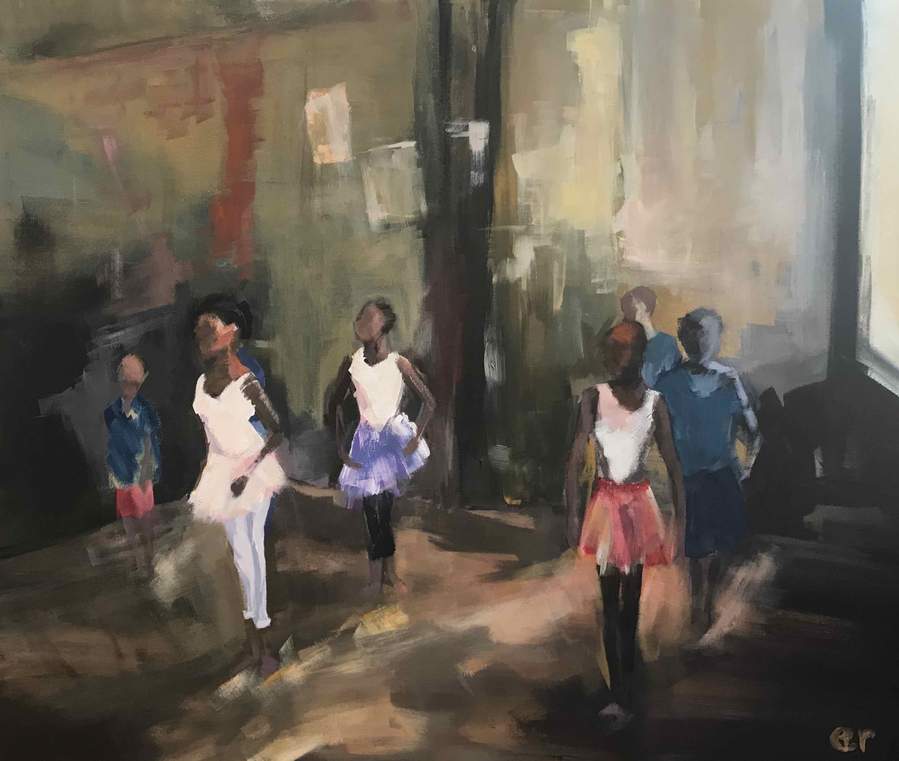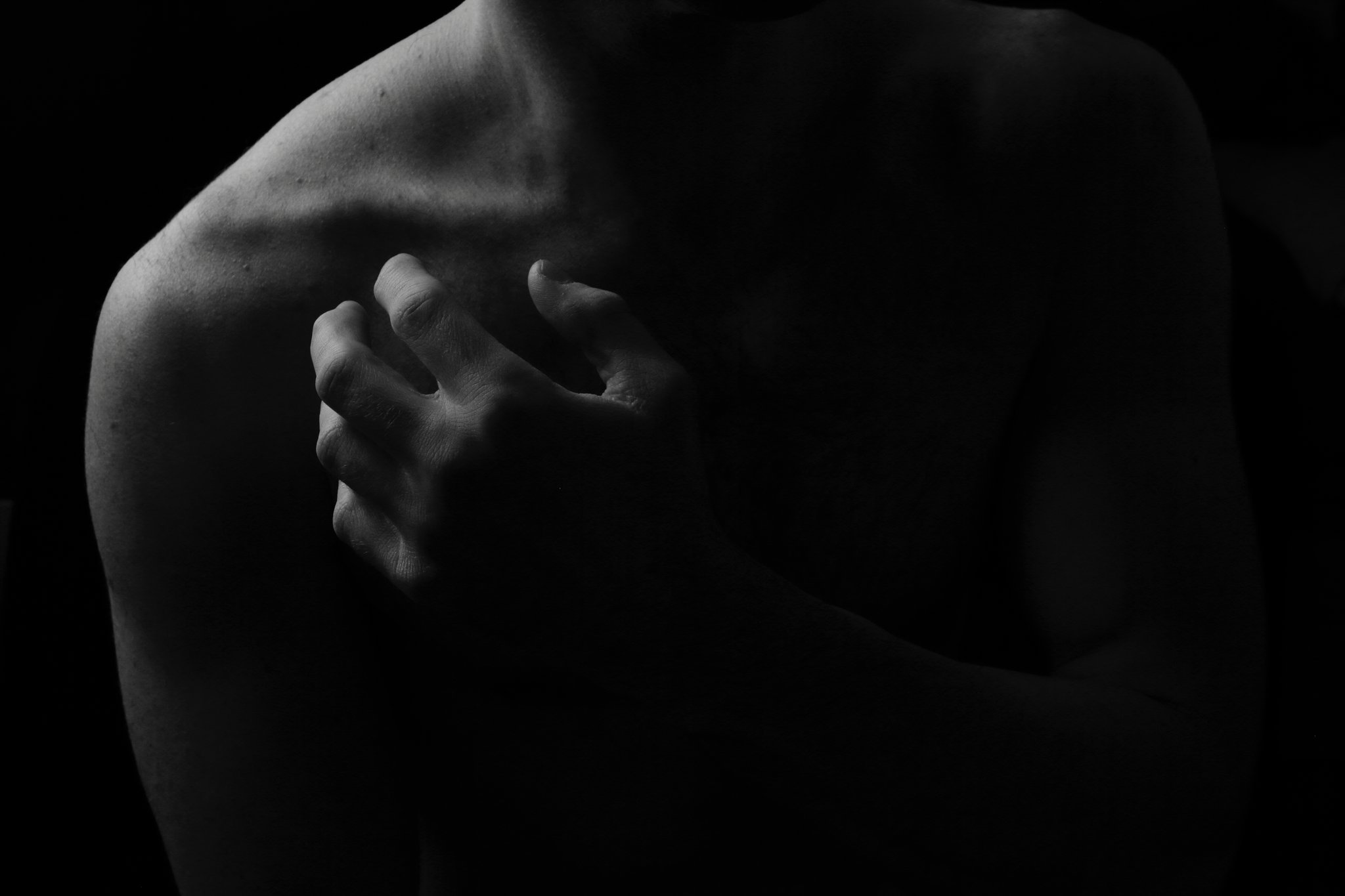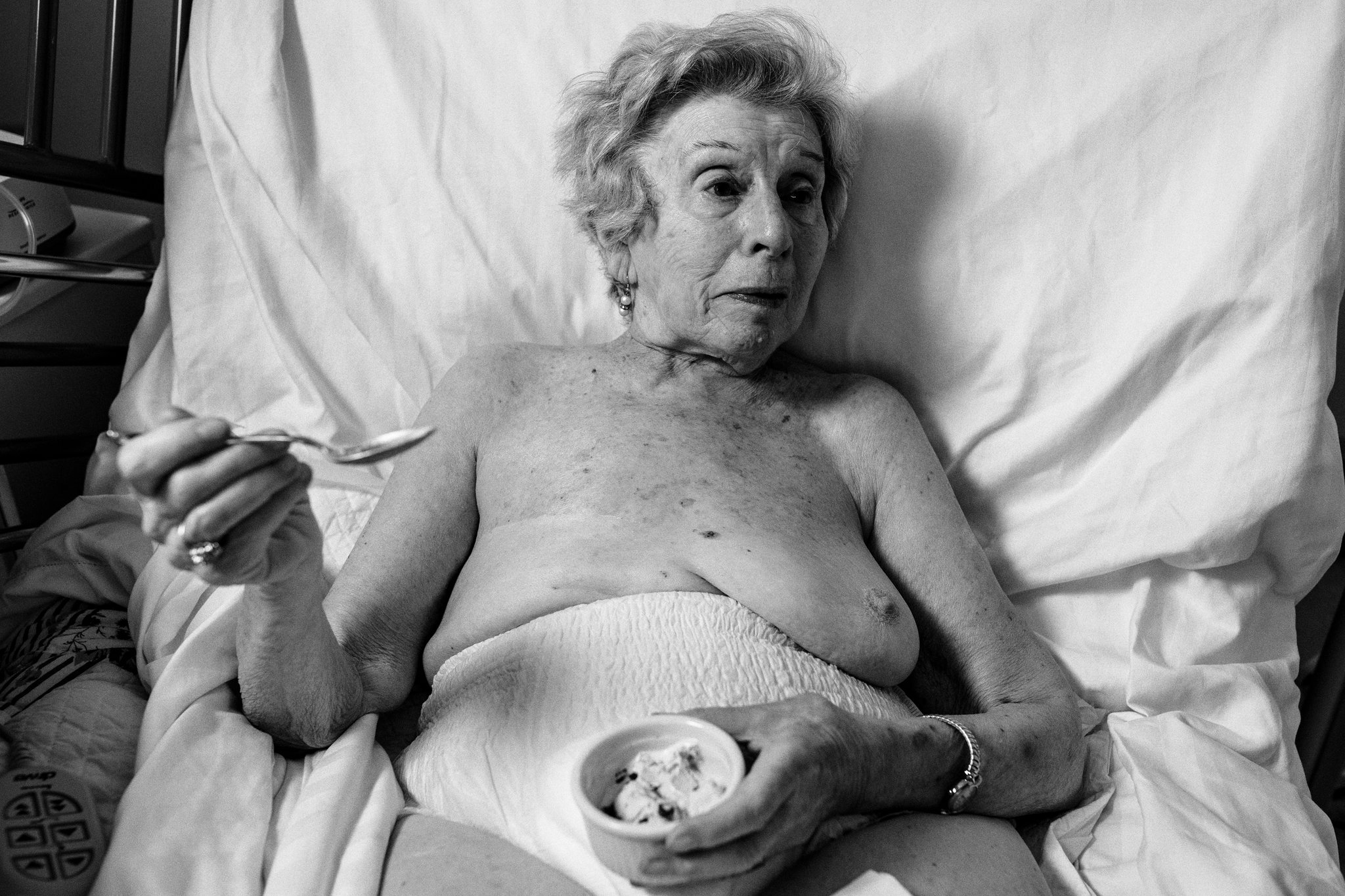Bodies, an online exhibition at Cambridge Art Association, is a site to sight. Bribe (if necessary) family and friends to visit it online with you, and discuss the showcase with your favorite snacks just inches away. For me, do pass the guacamole and chips and the Pom pomegranate juice, with alternating H2O breaks to balance the first potent liquid.
Below are just a few of the engaging cornucopia of artists that are presented at the online exhibition, with some of my abbreviated musings. Indeed, the exhibit is not inhibited to one style, and punctuates for a smorgasbord of artistic taste buds. Whether your sartorial artistic canvas leans to the political, literal, nostalgic, sensuous, or a combination of delicacies — possibility abounds to be thoroughly satiated. And…with some favorite snacks, beverages, and online company in tow, it will seamlessly summon a mounting feel-good vibe that transcends any computer monitor.
Elizabeth Ricketson, Kenyan Dance Class
Amongst many gifted others, with not enough s-p-a-c-e to contain in this writing piece, Kenyan Dance Class piqued. The artist Elizabeth Ricketson reminiscences, “Color or the decisions of compositional placement on a canvas create[s] a powerful image.” The earthy background of ivories, chocolates, grays, reddish-browns, and dark greens accentuate the palette of primarily African-American dancers in-studio in equally serene, upright resting stances with delicately posed limbs. And, within it, the compositional movement hubs particularly from the studio’s floor. The lighter tints of ivory placed there, masterfully evoke a narrative: undeniable movement that seemingly summons dancers from the woodwork. Did I just see a dancer’s face? I had to look more closely — once again.
Way up high, atop a female dancer that is attired in three-quarters black leggings, a lavender tutu, and complementing off-white sleeveless leotard, are two ivory rectangular shapes that resemble musical sheets, whimsically birthed to the receiving atmosphere and frozen in time and space. It contrasts applauding with the controlled elegance of all the dancers. The interplay of the portrait’s background colors is hypnotic. At the same time, the design’s strokes are a juxtaposition of relaxed earthly royalty — all very arresting in their own right, but deciding to collaborate even more brilliantly, if that were possible. My favorite color strokes are the ivory gradients, and my favorite scene dictates from the ivory, too — it’s the manner in which ivory ascends and is monopolizing the studio floor’s woodwork with kinesthetic illusions for the sole purpose of giving a healthy, soiled, excavated rhythm and visual harmony to Elizabeth’s Kenyan Dance Class.
Ant Oraloglu, Touch
Beginning at the lowest region of the neck, a heavily shadowed black and white print of a chiseled young male’s bare physique, gifting his shoulders and upper torso with hints of competing light and shadow, illuminate subdued sensuousness. The model’s bent right arm and cusped hand ingratiate across his chest to his protruding left collar bone and seem in cahoots with holding some of his vulnerability and organic desirability from too much display. The dominant shadows are accessories of safety and withhold his nipples from sight.
After reading the accompanying snippet of biographical commentary, I learned this is a self-portrait of the artist, Ant Oraloglu. It revealed, “[Ant is] an introverted person and tries to lift the personal barriers he has with his self-portrait work to become more friendly with himself and his art.” Serendipitously, the piece also convicted me to continue my practice of allowing myself to examine an artistic work without first reading accompanying written artifacts. In doing that, that contextual information then becomes a glorious added layer to the anticipated mystery, and finally unveils whether there are any vertices of thought with the artist. They pulse meaning to the universe of myself and all others, too, as the honor to embrace aspects of the artist’s selfhood is graciously extended.
Sally Bousquet, Keep It Under Wraps
My first thoughts when viewing Sally Bousquet’s Keep It Under Wraps included, “Wow! The subject is under wraps, literally and figuratively!” And then…I wasn’t so sure. I peered more intently to further understand my thoughts, and what observed variables were informing them.
To begin, a semi-transparent plastic sheet encapsulates a youthful, pale, and slim female figure, dressed in a singularly white spaghetti-strap slip dress (or perhaps a camisole). I envisioned lifting the plastic covering to further investigate her hair that seemed to dictate a luxurious reddish-brown color. The young girl’s right hand is pressed against the plastic, but there doesn’t seem to be any telltale signs of distress: Bulging veins? No. Discolorations? No. Abnormal facial expressions? Well…hard to comment definitively, for her face is partly obscured by her arm and hand. I generously estimated her age based on the dimensions of her hand and the other clouded anatomical structures shrouded in plastic, highlighted at certain angles by reflecting light.
Thinking aloud again: It just dawned on me that viewing this piece is like viewing puzzle pieces. I was really invested in figuring out its meaning. As the snippet of commentary states, “[Sally] enjoys employing ambiguity to create work that may defy simple explanation.” I began to copiously peruse the subject’s arm and the inside of her palm again. Nope, no signs of conspicuous distress. A most curious interaction occurred when I attempted to see past her levitated right hand, pressing against the plastic, to examine if her mouth was closed or slightly ajar. Was the subject well? Was she calling for help? Was she grimacing and happily engaged in imagination? I noticed I was STILL looking for SOS signals despite the aura of a calm ambient landscape independent of the viewed depiction. “Why was that?,” I then asked myself. It was surely my rightful organically engrained associations of such a pictorial scene, and then I had to again recall Sally’s self-proclaimed ambiguity in her works to help me along my interpretation trail — a trail that unveiled a blurred line, that the artist celebrates gratuitously in her work, to total a sum meaning of thought that reverberates with me still. Thanks, Sally.
Edward Boches, Survivor With Cherry Garcia
The woman in this narrative black and white photograph could be anyone’s grandmother in hospice care, reclining upright on a hospital bed in disposable intimate undergarments, and yet, she is Gloria Abramson, the mother of the photographer, Edward Boches.
In the scene, her left breast is removed and a faint lateral line above it rests, upstaged by more prominent age spots in her upper chest region. None of it suppresses the regal aura of this female survivor with light-colored, short, coiffed, and symmetrical hair, coupled with front-raised volume saluting her distinctly glossy, darkened lipstick ( which is most likely from the berry or rouge family). Pearl earrings, a ring, and a watch are accomplices to her established regal undertones, inhabiting her concrete understated undertones, too. Gloria’s immediate expression hints at her listening to someone speak or, opposingly, of her being fixated on something in her surroundings. She seemingly pauses from her Cherry Garcia ice cream, nestled in a small white ceramic dessert bowl, that is anticipating the immaculate spoon casually grasped in her ring-adorned hand. When I first gazed at this photograph, followed by a close-up of the tempting ice cream for any clarifying clues of its flavor, I then gazed at the title again, and smiled. “Gotta love that title! Definitely a smooth stitch of detail,” I resounded with an invisible tickle.
Mrs. Abramson’s placid expression devoid of significant care, and her lightly pierced lips detail a moment of just being without expectation — how freeing is that! In the abbreviated commentary, it was noted by Edward, “She was hot and wanted her clothes removed and requested a bowl of her favorite ice cream.” The commentary further enlightens, “[Edward] has a keen interest in documenting how people live, work, play, and struggle.” And, with this elegant black and white homage to his mother, those ingredients amass a gray area of how this narrative will ripple with each receiver, according to their individual stage of life and set of experiences.
Iman Aurora Sakkaf, Auras & Bones
The ambiance of generations and the ancestors’ warmth and protection recycle and are embedded in the reds, yellows, and oranges prevalent in Iman Aurora Sakkaf’s Auras &; Bones. A graceful color outlier is a dominant muted gray near the painting’s center that, like a fine chiffon seemingly drapes over a female figure’s head as hair or a scarf, secured away from the face with a centered triangular parting. That same mass of gray illusions and doubles as a bassinet connecting a thin gray circular perimeter line that cradles a very young dorsal child, adorning red attire but bare from the waist up. Within that same gray perimeter, the aura of an ancestor is conjuring goodness; she holds a cistern, pouring a liquid across the youth’s head. The trinity of the ancestor, the mother, and the young child are continually funneled in the gray tapestry, defying time. The artist, Iman, “marvels at the individual’s ability to inhabit multiple places at once.” To her, “reality is ever-changing, moving, brimming with possibility.”
On the painting’s left, a woman with burnt sienna brown hair swirling and flowing with muted yellow and ivory strands, perhaps another ancestor, observes the mother as she intently monitors her child. A bowl placed directly in front of the child contains a sedate olive-green substance, equating needs met. The greens, from the saddest to the lushest, seemingly lack of want and growth. The transcendence of Auras & Bones ingredients generations sinewing with “bones of my bones and flesh of my flesh”(1) protection, reverence, and timelessness.
Perhaps, like in my case, an audible sigh of memorable visual satisfaction may exhale from your body after viewing Bodies, an online exhibition at Cambridge Art Association. It’s inspirational to adorn, admire, aspect, and advocate for the anatomy, and this exhibit may also embody and color your musings in the process.
(1) Genesis 2:23 The man said, “This is now bone of my bones and flesh of my flesh.”






